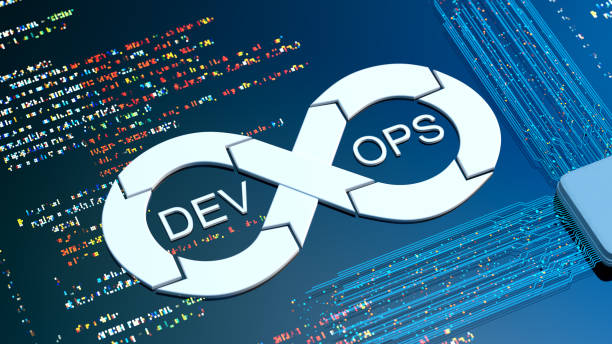
DevOps has long been the cornerstone of modern software delivery. From its roots in breaking down silos between development and operations to enabling continuous delivery pipelines, DevOps has revolutionized the way teams collaborate and ship code. However, as powerful and transformative as it is, one common challenge remains: complexity.
DevOps practices often involve intricate configurations, managing environments, configuring pipelines, writing YAML files, and handling infrastructure as code. The tools are robust and highly customizable, but this complexity can be a bottleneck for teams focused on delivering code quickly.
This is where the new trend of Zero-Config DevOps comes in. With the rise of zero-config platforms and advances in AI-driven automation, the idea of NoOps, a development environment that abstracts away the need for manual operations work, has gained traction. Zero-config DevOps makes it easier for development teams to push code faster, with less friction and fewer configuration hurdles.
But what exactly does zero-config mean, and is NoOps really within reach?
What is Zero-Config DevOps?
Zero-config DevOps platforms significantly simplify the setup and maintenance of CI/CD pipelines, infrastructure, and automation workflows. Instead of requiring developers to manually configure their environments, zero-config tools come with pre-built, opinionated setups that automate most operational tasks.
With zero-config DevOps, developers can focus on writing code and pushing updates without worrying about the complexities of the underlying infrastructure. These tools handle everything from continuous integration and deployment (CI/CD) to monitoring, security, and scaling.
Key features of zero-config DevOps platforms include:
- Automated pipeline creation: Developers push code, and the platform handles the deployment pipeline automatically.
- Built-in security and monitoring: Security and monitoring are integrated into the platform, making it easier for teams to secure and observe their applications without manual configuration.
- Opinionated architecture: The platforms are often opinionated about best practices, reducing the need for configuration and ensuring that teams work within the boundaries of established, secure patterns.
- Auto-scaling and self-healing infrastructure: Zero-config platforms ensure applications scale automatically based on demand and can even auto-heal when issues arise, without manual intervention.
The Shift from DevOps to NoOps
The term NoOps has circulated in the tech world for years as a dream state where the need for operations work completely disappears. However, NoOps has often been dismissed as unrealistic. After all, the complexity of managing cloud infrastructure, deployment pipelines, and security isn’t something that can be “automated away.” Right?
The reality is that NoOps isn’t about eliminating operations altogether, it’s about reducing the manual effort involved. Operations are still necessary, but modern platforms automate repetitive tasks and enable developers to work without the overhead of managing them.
Zero-config tools help bridge the gap between developers and operations, letting developers focus on writing code and quickly iterating on new features. The infrastructure, deployment, monitoring, and security are taken care of behind the scenes. In essence, developers experience the benefits of NoOps without completely removing the operational requirements.
Benefits of Zero-Config DevOps
The appeal of zero-config DevOps lies in its ability to:
- Increase Developer Productivity: By eliminating the need for extensive configuration work, developers can focus on what they do best, writing and deploying code. This leads to faster delivery cycles and increased productivity.
- Improve Security: Since security is built into zero-config platforms, teams can avoid security misconfigurations often arising from manual setup. Automatic security updates, vulnerability scanning, and compliance checks help keep applications safe without manual intervention.
- Streamline Onboarding: New team members can be onboarded more quickly. Instead of spending time setting up complex environments, they can start coding right away, using the opinionated setup provided by the platform.
- Optimize Scalability: Zero-config platforms ensure your application scales automatically based on demand. Whether you’re handling a sudden spike in traffic or a gradual increase over time, the infrastructure scales up or down without manual intervention.
- Reduce Operational Overhead: Since operational tasks like infrastructure management, patching, and monitoring are automated, the maintenance burden is lowered. Operations teams can focus on more strategic tasks rather than routine maintenance.
Challenges of Zero-Config DevOps
While zero-config DevOps tools bring several benefits, they are not without challenges. These platforms are typically opinionated, meaning developers have less control over the underlying configuration. This can be limiting for teams that require a high degree of customizability or have specific infrastructure needs.
Additionally, zero-config platforms often abstract away many of the technical details, which can make it harder for teams to troubleshoot issues when things go wrong. While simplicity is a huge benefit, it can sometimes leave developers feeling “out of the loop” regarding how the system works under the hood.
Moreover, as these platforms evolve, organizations must keep pace with updates and changes to the infrastructure, which may require additional training or adjustments.
The Future of Zero-Config DevOps
Zero-config DevOps tools are rapidly gaining popularity, and this trend is likely to continue as more teams embrace cloud-native environments and the benefits of automation. As AI and machine learning continue to improve, the ability to automate more aspects of development and operations will only increase.
However, Zero-Config DevOps is not a one-size-fits-all solution. While it’s a great option for many teams, it won’t replace all traditional DevOps practices. A more hands-on approach may still be required for highly complex, custom-built systems or environments with specialized needs.
Nevertheless, zero-config DevOps is an attractive option for teams looking to streamline their workflows and accelerate software delivery. It enables rapid development cycles, reduces operational overhead, and allows developers to focus on writing code that delivers value to the business.
Conclusion
Zero-config DevOps platforms are helping bring the NoOps dream closer to reality by automating repetitive operational tasks and reducing manual configuration. While the approach isn’t entirely free of operational tasks, it significantly lowers the complexity of managing modern applications and infrastructure.
Zero-config DevOps offers a promising path forward for teams aiming to deliver software faster, improve collaboration, and focus on innovation. As these tools continue to evolve, we’ll likely see even more automation, simplifying DevOps further and making it easier for developers to focus on creating high-quality code.

Leave a Reply